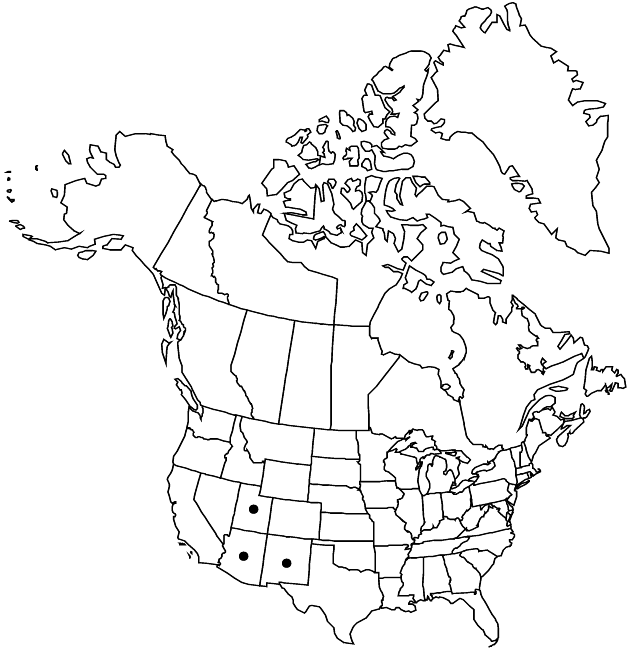Difference between revisions of "Ericameria nauseosa var. nitida"
Phytologia 75: 87. 1993.
Common names: Shiny-bract rabbitbrush
Endemic
Basionym: Chrysothamnus nauseosus subsp. nitidus L. C. Anderson Phytologia 38: 313, fig. 2. 1978
Synonyms: Chrysothamnus nauseosus var. nitidus (L. C. Anderson) S. L. Welsh
FNA>Volume Importer |
imported>Volume Importer |
||
| (2 intermediate revisions by 2 users not shown) | |||
| Line 8: | Line 8: | ||
}} | }} | ||
|common_names=Shiny-bract rabbitbrush | |common_names=Shiny-bract rabbitbrush | ||
| + | |special_status={{Treatment/ID/Special_status | ||
| + | |code=E | ||
| + | |label=Endemic | ||
| + | }} | ||
|basionyms={{Treatment/ID/Basionym | |basionyms={{Treatment/ID/Basionym | ||
|name=Chrysothamnus nauseosus subsp. nitidus | |name=Chrysothamnus nauseosus subsp. nitidus | ||
| Line 55: | Line 59: | ||
|publication title=Phytologia | |publication title=Phytologia | ||
|publication year=1993 | |publication year=1993 | ||
| − | |special status= | + | |special status=Endemic |
| − | |source xml=https:// | + | |source xml=https://bitbucket.org/aafc-mbb/fna-data-curation/src/2e0870ddd59836b60bcf96646a41e87ea5a5943a/coarse_grained_fna_xml/V19-20-21/V20_114.xml |
|tribe=Asteraceae tribe Astereae | |tribe=Asteraceae tribe Astereae | ||
|genus=Ericameria | |genus=Ericameria | ||
Latest revision as of 19:58, 5 November 2020
Plants 60–150 cm. Stems yellowish green, leafy at flowering, densely tomentose. Leaves yellowish green; blades 1-nerved, linear, 30–50 × 1–1.5 mm, faces glabrate. Involucres 10–12.5 mm. Phyllaries 13–19 (outer weakly keeled), apices erect, acute (outer) or acute to obtuse (inner), outer abaxial faces scurfy-tomentulose, inner glabrous. Corollas 9.5–11 mm, tubes mostly glabrous, lobes 0.7–1 mm, glabrous or villous; style appendages longer than stigmatic portions. Cypselae usually glabrous, sometimes hairy; pappi 9–10 mm. 2n = 18.
Phenology: Flowering late summer–fall.
Habitat: Sandy gravels of dry streambeds
Elevation: 1200–1800 m
Distribution

Ariz., N.Mex., Utah.
Discussion
Selected References
None.
Lower Taxa
None.